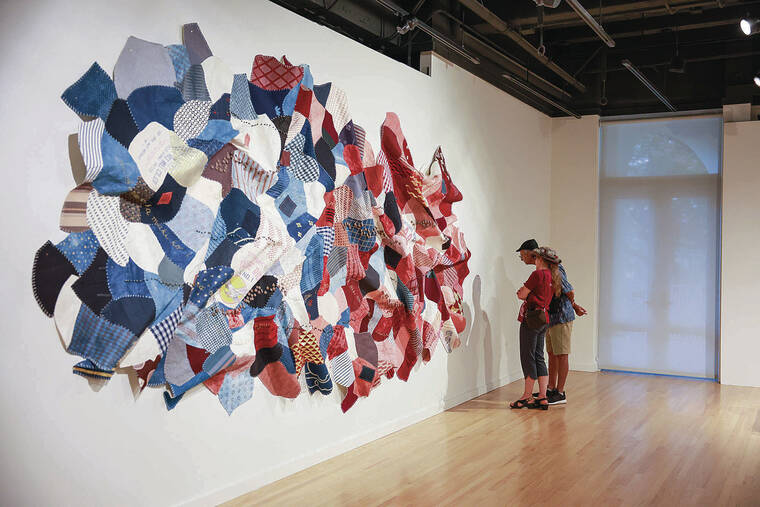
The State Foundation on Culture and the Arts (SFCA) in Hawaii is confronting a significant funding challenge. The agency is set to receive approximately $1 million in federal funds from the National Endowment for the Arts (NEA), yet it faces an equal shortfall in state funding due to recent legislative changes governing the use of its Works of Art Special Fund.
These adjustments were implemented to safeguard the state against potential federal funding cuts under the administration of former President Donald Trump. According to state Representative Jeanne Kapela, who chairs the House Committee on Culture and Arts, the changes were necessary to ensure compliance with a federal government that has been increasingly critical of state funding practices.
Established in 1989, the special fund originally allocated 1% of construction and renovation costs of new state buildings to enhance public access to art initiatives. This was an extension of the earlier 1967 Art in Public Places program, which focused solely on acquiring artwork.
The SFCA’s Executive Director, Karen Ewald, noted that the agency has traditionally used the special fund for a range of expenses, including the transportation and display of artworks in public buildings, operations at the Hawai‘i State Art Museum, and the Artists in the Schools program, which places artists in educational settings.
However, this landscape shifted dramatically with the signing of Act 131 by Governor Josh Green. The act restricts the use of the special fund solely to “costs related to the acquisition, planning, design and construction of works of art.” Consequently, much of the agency’s operational budget is now off-limits, impacting several paid positions and public programs.
Ewald expressed concern over the implications of this change, stating, “We want to ensure there is dedicated funding for the arts, and this just became less dedicated.” She described the situation as a dismantling of previous funding structures, emphasizing the need for sustainable financial support for the arts community.
The legislative process surrounding this funding adjustment was contentious. Ewald explained that the SFCA’s budget was entangled with House Bill 1378, initially aimed at establishing a new performing arts grant. The bill’s structure put the agency’s funding at risk, leaving Ewald to describe the situation as being “held hostage” by the legislative process.
Governor Green had previously opposed the bill, citing concerns about the long-term stability of arts funding. Yet, in a statement to the *Honolulu Star-Advertiser*, he later remarked that the final version of the bill had undergone significant amendments to ensure that taxpayer money is managed transparently and accountably.
Typically, the SFCA could utilize up to $5.6 million from the special fund, in addition to around $700,000 from state general funds. Following the recent changes, the agency is now limited to approximately $3.3 million from the special fund, which can only be used for art acquisition and commissioning. In addition, it will receive about $500,000 from the general fund for other operational needs.
Despite the funding setbacks, Ewald noted that the SFCA has been approved for $1,014,738 in federal funds, albeit delayed by nearly four months. This delay stemmed from uncertainty surrounding the NEA’s budget following proposed cuts by the previous administration.
Ewald acknowledged that while the federal funding provides some relief, the situation is far from ideal. “We’re surviving and we’re going to get our federal funding,” she said, adding that the agency will continue to seek ways to serve the community effectively with the available resources.
From the legislative perspective, Kapela explained that the adjustments to the special fund were intended to align state law with federal guidelines. She emphasized that the changes were not a reflection of the SFCA’s actions but rather an effort to ensure compliance with federal funding criteria.
Kapela asserted, “You put the bond itself, the building of that project, at risk if you’re not using the funds properly.” She reinforced that the adjustments were a proactive measure to protect the state’s interests amid a challenging funding environment.
As the SFCA navigates these complexities, Ewald remains cautious about the future. She highlighted the risk of losing dedicated funding for arts and culture, expressing a desire to maintain a stable financial foundation for the agency.
Looking ahead, both Ewald and Kapela expressed hope for future legislative sessions that may address ongoing funding disparities. Kapela acknowledged the importance of creating a sustainable budget framework, stating that “there’s so much happening on the federal level,” and emphasized the need to be prepared for potential funding fluctuations.
The SFCA’s funding situation underscores the challenges faced by arts organizations in maintaining operational continuity amidst changing political landscapes. Ewald concluded with a sense of determination, stating, “It’ll be really tight, but we’ll still be able to serve the community.”







